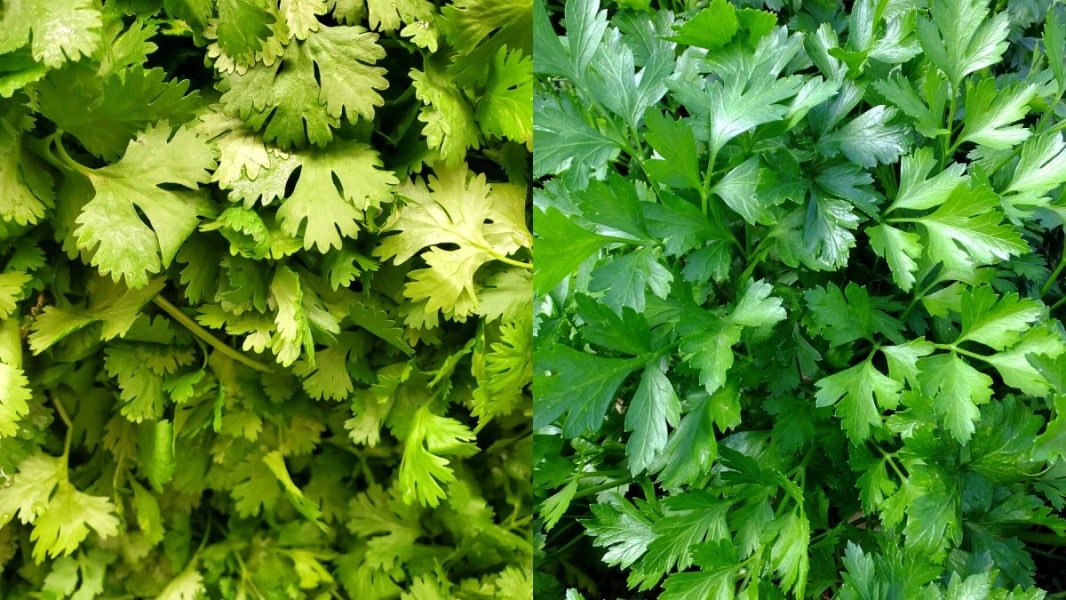Parsley and coriander are two popular seasonings widely used in various cuisines around the world. Although they have some similarities, their distinct characteristics make them unique in terms of flavor, aroma and culinary use. In this text, we will explore their differences and the ways in which they can enhance dishes with their peculiarities.
Parsley
Parsley, scientifically known as Petroselinum crispum, is an aromatic herb with delicate, bright green leaves. Its flavor is smooth and refreshing, with slightly herbaceous and slightly bitter notes. There are two main types of parsley: the smooth-leaf variety and the curly-leaf variety. Both can be used to garnish dishes, but the curly variety is generally preferred for culinary purposes due to its greater heat resistance.
Coriander
On the other hand, coriander, also known as coriander or garden coriander (Coriandrum sativum), has a strong and distinctive flavor that is often described as spicy and citrusy, with some subtle flavor nuances. Its leaves are jagged and have a bright green color similar to parsley, but the flavor is significantly different. In addition to the leaves, coriander seeds are also used as a spice and have a unique flavor profile.
Parsley
One of the main differences between parsley and cilantro is the way they are used in cooking. Parsley is often used as a complementary ingredient to enhance and decorate dishes, especially in salads, soups, sauces and garnishes. Its mild flavor allows it to mix well with other herbs and ingredients, adding a fresh touch to preparations.
Cilantro is a central element in many dishes from different cultures, such as Mexican, Indian, Thai and Middle Eastern cuisine. Its leaves are often added to guacamole, tacos, chutneys, curries and salads. Coriander seeds are also widely used as a seasoning in dishes such as meat, rice and bread.
No more confusion
Another significant difference between these two herbs is related to different people's taste buds. While some people enjoy coriander's sharp flavor and citrus notes, others have an aversion to it, describing it as having a soapy or unpleasant taste. This phenomenon, known as “cilantro aversion”, is influenced by genetic factors and can lead people to prefer parsley as a milder and more well-accepted alternative.
In addition to their culinary uses, parsley and coriander also offer health benefits. Both are rich in antioxidants, essential vitamins and minerals. Parsley is an excellent source of vitamin C, vitamin K and folate, while cilantro is rich in vitamin A, vitamin K and potassium. Both herbs have anti-inflammatory properties and may contribute to overall heart and immune system health.
Conclusion: Parsley
In summary, although parsley and cilantro share some similarities, their differences in flavor, aroma and culinary uses make them unique and versatile ingredients. Whether decorating dishes with parsley or the intensity of flavor provided by coriander, both herbs play an important role in global cuisine and add a special touch to our foods. Experimenting with these herbs in different recipes is a great way to explore their unique flavors and enrich your culinary preparations.


